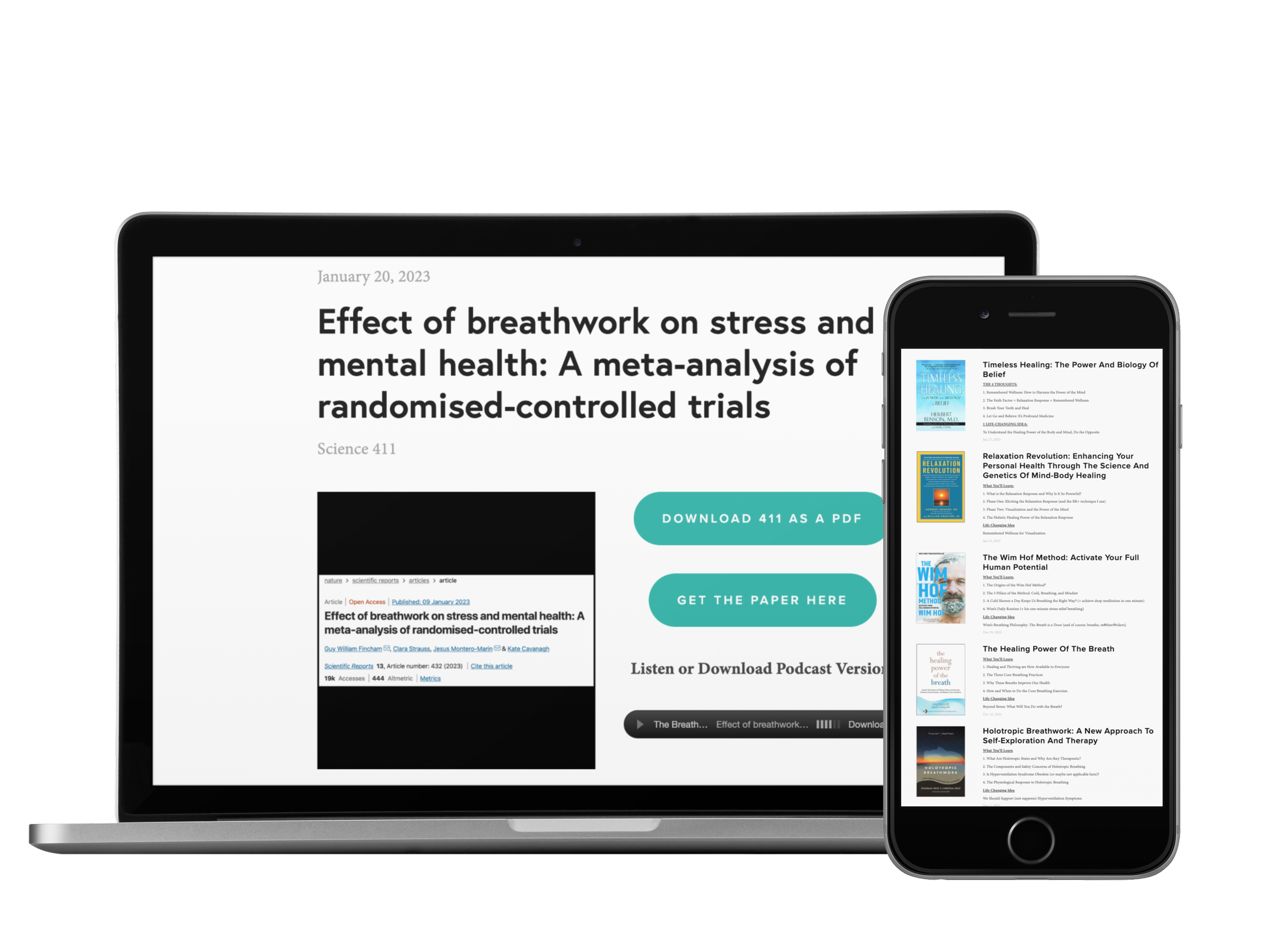Listen Instead of Reading
If you enjoy listening, you can subscribe to the audio version on Spotify, Apple Podcasts, and Audible so you don’t even have to look at the email 😊
Enjoy These Posts?
Reading Time: 1 min 30 sec
I hope the next 18’ish breaths are the most nourishing of your day.
4 THOUGHTS
1. Why Slow Breathing Works
“Specifically, as slow and deep breathing is initiated during a contemplative practice, the internal state of being settles into a relaxed state with a slower heart rate. With this slowing of heart rate, a positive feedback loop is initiated: The vagus nerve sends this lowered heart rate information via afferent fibers to the brain, and after it receives these signals that imply safety from the body, the brain then turns off threat arousal activation. Now, parasympathetic activity is dominant over sympathetic activity, initiating a felt sense of peace, safety, and contentment.”
Just a terrific “scientific reminder” of why slow breathing works and is a crucial part of most contemplative practices that elicit deep rest 👏
2. The One-Second Meditation
“Concentrate for one second. If, at the end of this time, your mind has wandered off, concentrate for another second, and then another. Nobody ever has to concentrate for more than one second—this one.”
– Alan Watts, Become What You Are
Yep, that’s about as straightforward and low-pressure as it gets. I’ve been adopting this mindset during my practice and it’s been super helpful. If it resonates with you, give it a try and see how you feel 🙏
3. Breathing vs. Meditation, Clothing, and Lighthearted
1. Studying breathing allows me to put my years of scientific training to good use. Practicing meditation teaches me how to forget everything I learn.
2. The breath will outgrow any clothes you try to put on it.
3. There is a reason laughter is called lightheartedness and not lightheadedness.
4. Being Breathed
“One day I noticed that I wasn’t breathing—I was being breathed.”
– Byron Katie
No matter what we call it—God, prana, life force, or simply the autonomic nervous system—it’s pretty remarkable to remember that there is something in us that ensures we’re always “being breathed,” always living 👏
1 Quote
“Everything that slows us down and forces patience, everything that sets us back into the slow circles of nature, is a help.””
1 Answer
Category: Lungs
Answer: Healthy lungs are typically this color.
…
(Cue the Jeopardy! music.)
…
Question: What is pink?
In good breath,
Nick Heath, T1D, PhD
“Breathing is the compound interest of health & wellness.”
Wisdom that Inspires Action, Mindfulness, and Humor
The Breathing 411 is mindfully created each week to support your journey. If you find it valuable, consider joining the Breath Learning Center. Members gain access to an ever-growing collection of book summaries, science paper reviews, and insights from the greatest teachers and thinkers, designed to help you find your unique path, connect ideas, help others, laugh, and grow as a Mixed Mindful Artist. It also includes ad-free daily emails, guided practices, and more.
The Breathing App for Diabetes
This is the first program specifically made for people with diabetes to help manage their stress through breathing and mindfulness practices. In addition to the amazing program inside the app, we have some really neat things coming up, so sign up now!
Amazon Associate Disclosure
I’ve been recommending books for almost 6 years. Yet somehow, I just discovered that I could be an Amazon affiliate [face-palm]. In any case better late than never. Now, any Amazon link you click is an affiliate link. As an Amazon Associate, I earn from qualifying purchases. So, if you’d like to support my work, buying books through these links is helpful : )
* An asterisk by a quote indicates that I listened to this book on Audible. Therefore, the quotation might not be correct, but is my best attempt at reproducing the punctuation based on the narrator’s pace, tone, and pauses.






